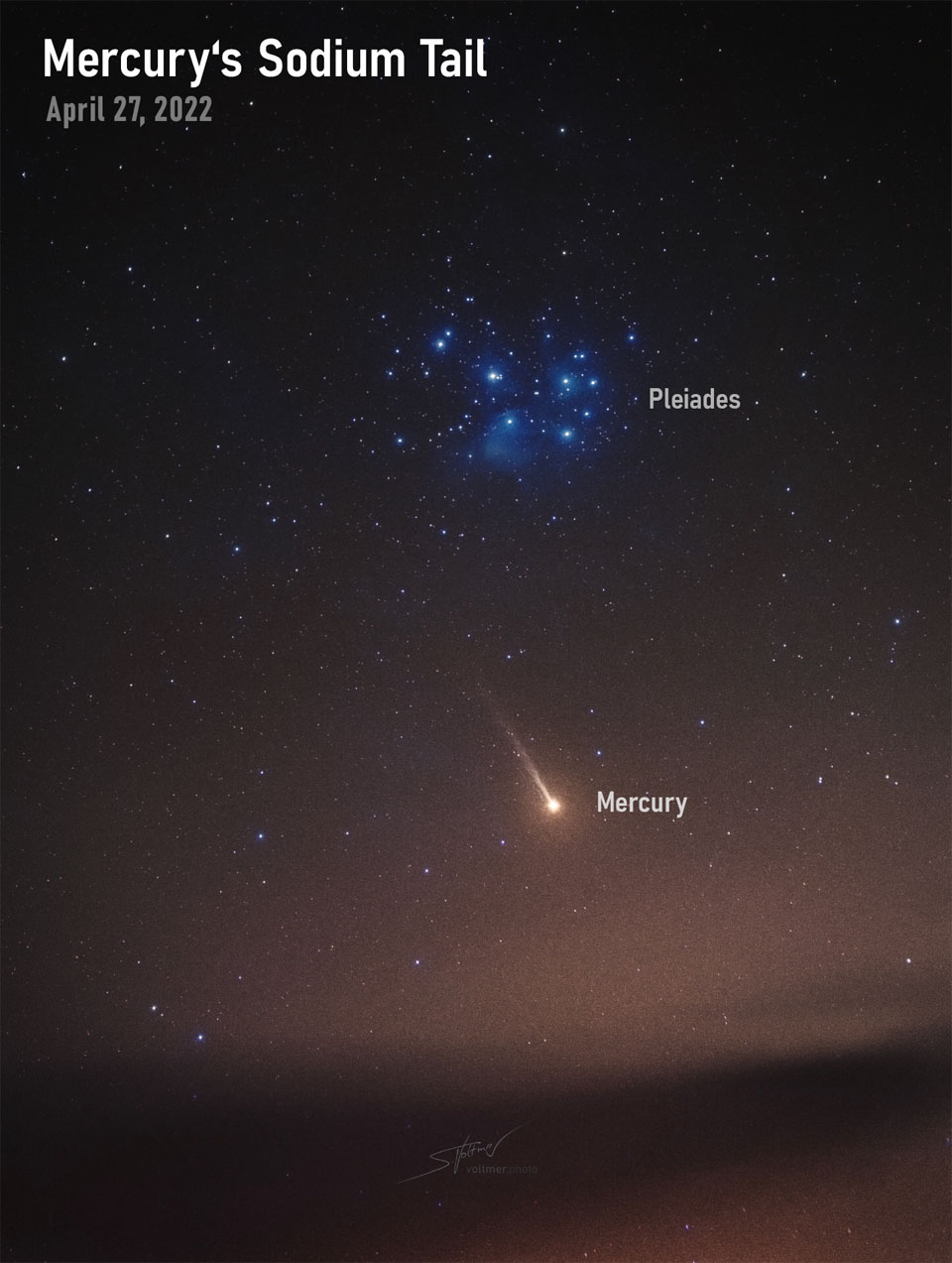안녕하세요!
디지탈노다지입니다.
미국 NASA에서 제공하는 오늘의 우주 사진을 공유합니다.
어떤 우주의 모습을 비춰줄까요?
우선, 사진부터 감상하시죠! 이 멋진 사진의 제목은 Mercury's Sodium Tail 입니다.
NASA에서 공식적으로 제공한 설명을 보시죠. That's no comet. Below the Pleiades star cluster is actually a planet: Mercury. Long exposures of our Solar System's innermost planet may reveal something unexpected: a tail. Mercury's thin atmosphere contains small amounts of sodium that glow when excited by light from the Sun. Sunlight also liberates these molecules from Mercury's surface and pushes them away. The yellow glow from sodium, in particular, is relatively bright. Pictured, Mercury and its sodium tail are visible in a deep image taken last week from La Palma, Spain through a filter that primarily transmits yellow light emitted by sodium. First predicted in the 1980s, Mercury's tail was first discovered in 2001. Many tail details were revealed in multiple observations by NASA's robotic MESSENGER spacecraft that orbited Mercury between 2011 and 2015. Tails, of course, are usually associated with comets. 혜성이 아니야. 플레이아데스 성단 아래에는 실제로 행성이 있다. 수성. 우리 태양계의 가장 안쪽 행성에 대한 긴 노출은 예상치 못한 것을 드러낼지도 모른다: 꼬리. 수성의 얇은 대기는 태양으로부터의 빛에 의해 들뜨면 빛나는 소량의 나트륨을 포함하고 있다. 햇빛은 또한 이 분자들을 수성의 표면으로부터 해방시키고 그들을 밀어냅니다. 특히 나트륨에서 나오는 노란 빛은 비교적 밝다. 사진은 지난 주 스페인 라팔마에서 찍은 깊은 사진에서 수성과 나트륨 꼬리가 주로 나트륨이 방출하는 노란색 빛을 투과하는 필터를 통해 보인다. 1980년대에 처음 예측된 수성의 꼬리는 2001년에 처음 발견되었다. 2011년과 2015년 사이에 수성을 선회한 NASA의 로봇 메신저 우주선의 여러 관측에서 많은 꼬리 세부 사항이 밝혀졌다. 물론, 꼬리는 보통 혜성과 관련이 있습니다. 우주의 다양한 모습은 아름답습니다~
그리고 광활하며 거대합니다. 형형색색 변화하며 살아있는 듯한 느낌을 주네요~ 가볼 수는 없지만 이렇게 사진으로 볼 수 있어서 좋네요!
디지탈노다지는 더 좋은 사진과 함께 돌아오겠습니다,
남은 하루도 행복하세요~ 
'자동화정보' 카테고리의 다른 글
| NGC 3521: Galaxy in a Bubble(2022-05-05)NASA 우주사진 (0) | 2022.05.05 |
|---|---|
| Planets Over Egyptian Pyramid(2022-05-04)NASA 우주사진 (0) | 2022.05.04 |
| Partial Solar Eclipse over Argentina(2022-05-02)NASA 우주사진 (0) | 2022.05.02 |
| First Horizon-Scale Image of a Black Hole(2022-05-01)NASA 우주사진 (0) | 2022.05.01 |
| M44: The Beehive Cluster(2022-04-30)NASA 우주사진 (0) | 2022.04.30 |